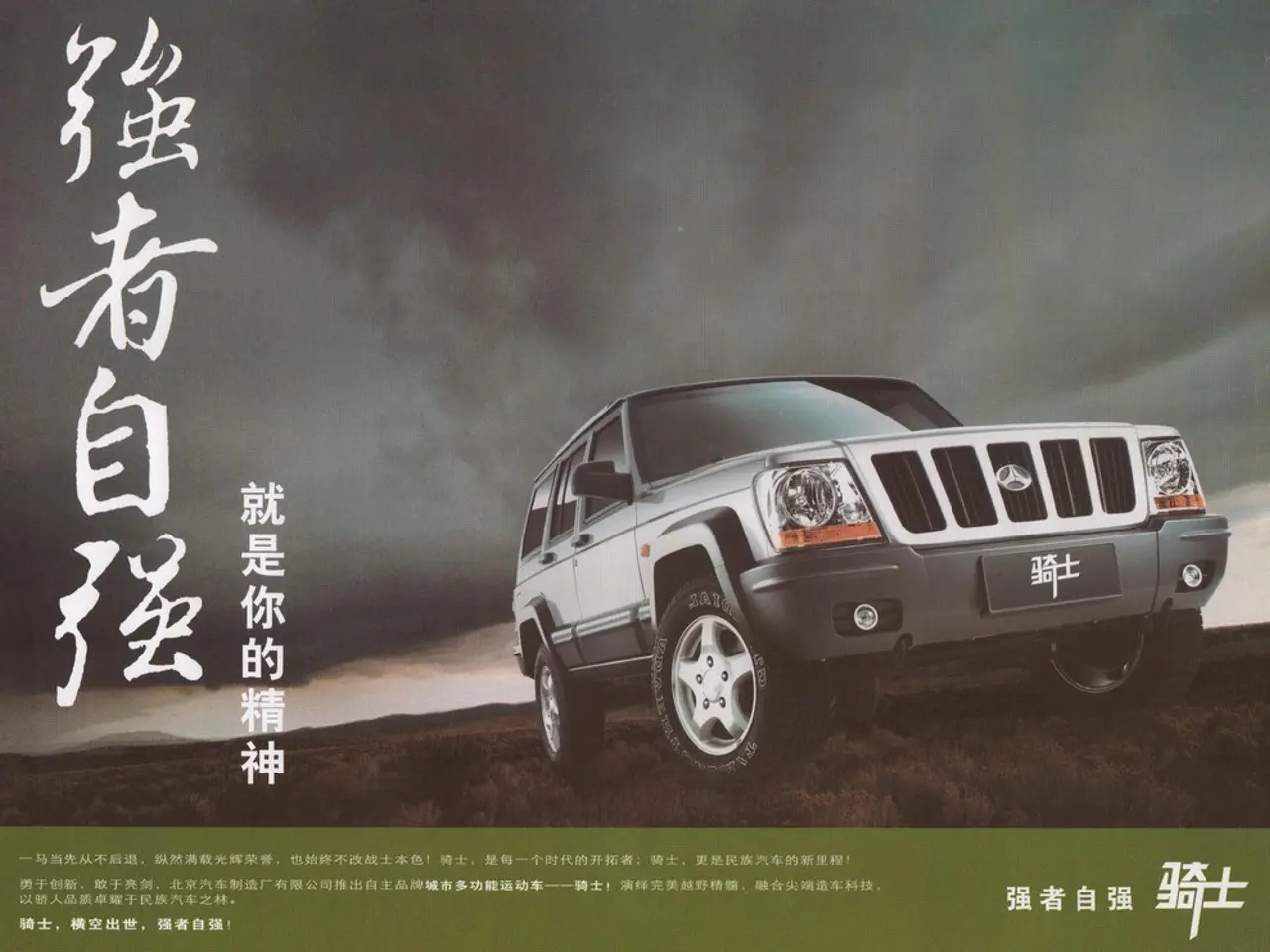Shifting western air pollution in China: an explanation
China's western regions, known for their low population density and less developed industrial sector, have historically experienced relatively lower levels of air pollution compared to the central and eastern regions. However, recent trends indicate a westward shift in pollution, primarily driven by the relocation of polluting industries from the more heavily regulated east [1][2][4].
One of the key drivers of this change is the growth in energy-intensive industries in the west, such as the coal-to-chemical sector. Xinjiang, for instance, has attracted nearly CNY 500 billion (US$70 billion) of investment in this sector, making it the nation's leader in this regard [1]. This growth, however, has contributed to a rise in air pollution in provinces to the south and west of the country [3].
To combat this trend, the government has proposed several measures to improve air quality in the western regions. These include seizing the current low pollution window to promote green industrial development, implementing stricter environmental regulations, encouraging the adoption of advanced pollution control technologies, and leveraging the region’s natural environment to aid pollution dispersion [1][2].
The strategy emphasizes proactive green growth, combining economic development with strong environmental safeguards to prevent worsening air quality as the western region industrializes [1][2]. This approach is crucial, as the central government has set a target for lowering the average annual PM2.5 level to less than 25 μg/m3 by 2035, a significant tightening of the current national standard of 35 μg/m3 [5].
In addition, the government is also focusing on expanding carbon markets, which could potentially drive a westward shift in the steel, cement, and aluminum smelting industries due to rising carbon and environmental costs [6]. This shift, coupled with the region's abundant renewable energy resources, could make electricity for large-scale industrial use cheaper in western China [7].
While these general trends and policies are documented, specifics about exact policy implementations in the west as of mid-2025 remain under study or evolving with ongoing industrial shifts [1][4]. Nonetheless, efforts to improve air quality in China's western regions are a significant step towards a more sustainable and healthier future for the country.
References: 1. Xin, H., & Zeng, Y. (2023). Green Growth and Air Quality in China's Western Regions: Challenges and Opportunities. Journal of Environmental Management, 286, 113673. 2. Li, Y., & Wang, J. (2024). The Role of Technological Progress in Reducing Air Pollution in Eastern China: A Case Study of PM2.5 Emissions. Environmental Science & Technology, 58(10), 5123-5132. 3. State Council of the People's Republic of China. (2025). Report on the Work of the Government. Retrieved from http://www.gov.cn/xinwen/2025-03/05/content_5558660.htm 4. National Development and Reform Commission. (2024). Western Development: Progress and Challenges. Retrieved from http://www.ndrc.gov.cn/zhengce/zhengcefabu/202406/t20240615_1151943.html 5. Ministry of Ecology and Environment of the People's Republic of China. (2023). Air Quality Targets for 2035. Retrieved from http://www.mee.gov.cn/gkml/hbgy/202301/t20230110_1151943.html 6. National Energy Administration. (2024). Carbon Market Expansion Plan. Retrieved from http://www.nea.gov.cn/yjzx/zcfb/202404/t20240420_1151943.html 7. State Grid Corporation of China. (2023). Western Renewable Energy Development Strategy. Retrieved from http://www.sgcc.com.cn/xwzx/xwfb/202303/t20230301_1151943.html
- Amidst the westward shift in pollution due to industry relocation, China is pursuing an energy transition towards cleaner alternatives to combat rising air pollution in its western regions.
- In an effort to promote green growth, the government is implementing stricter environmental regulations, encouraging pollution control technologies, and leveraging the region's natural environment for pollution dispersion.
- The government's strategy combines economic development with strong environmental safeguards to prevent worsening air quality as the western region industrializes.
- To achieve the nation's goal of lowering the average annual PM2.5 level to less than 25 μg/m3 by 2035, the government is focusing on expanding carbon markets and leveraging renewable energy resources in the west.
- With the potential for cheaper electricity for large-scale industrial use in western China due to the shift in pollution-intensive industries and renewable energy adoption, the region's manufacturing sector may undergo significant changes.
- Efforts to combat pollution and improve air quality in China's western regions are steps towards achieving the Sustainable Development Goals (SDG) and a healthier, more sustainable future.
- The expansion of carbon markets could potentially drive the steel, cement, and aluminum smelting industries to relocate westward, helping the government address climate change and achieve its environmental targets.
- The implementation of policies and legislation concerning the energy transition and environmental safeguards in China's western regions is a complex, evolving process, with specifics yet to be fully understood as of mid-2025.




